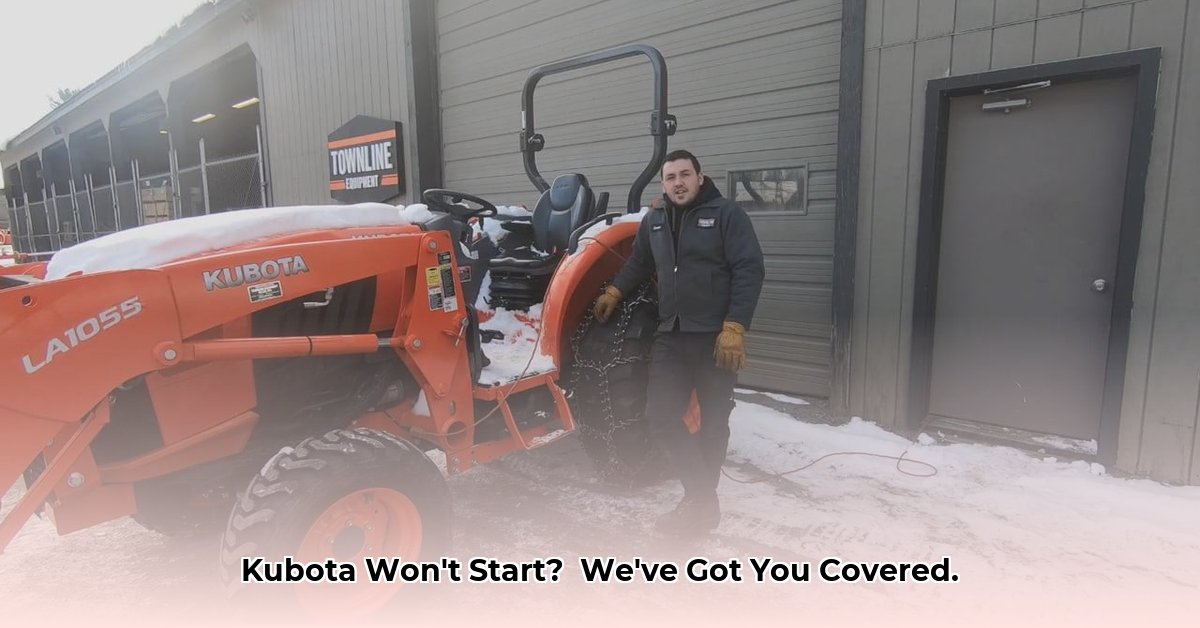
This comprehensive guide provides a step-by-step approach to starting your Kubota tractor, incorporating pre-start checks, the starting procedure itself, post-start checks, and troubleshooting common issues. Even novice operators will find this guide helpful. For more Kubota resources, check out this helpful website.
Pre-Start Preparations: Essential Checks Before Starting
Before attempting to start your Kubota, several crucial checks ensure both operational efficiency and your safety. Neglecting these steps can lead to unnecessary wear and tear or even damage.
Fuel Level: Check your fuel gauge. Sufficient fuel is essential; running low can cause problems. (Ensure the fuel tank is at least partially full.)
Engine Oil Level: Use the dipstick to verify the engine oil level. Low oil is detrimental to engine operation. (Refer to your owner's manual for the correct oil level range.)
Coolant Level: Examine the coolant reservoir. Adequate coolant prevents overheating. (Ensure the coolant level is within the marked limits on the reservoir.)
Battery Condition: Inspect the battery terminals for corrosion (green build-up). Clean any corrosion and ensure tight connections. A weak battery will prevent starting. (Consider a battery charger if the battery seems weak.)
Parking Brake Engaged: Always engage the parking brake firmly before starting the tractor. This is a crucial safety precaution to prevent unintentional movement.
Attachments Removed: Remove any unnecessary implements or attachments. These can interfere with the starting process and potentially cause damage.
Level Ground: Position the tractor on level ground, away from obstructions and hazards. This ensures stability and safe operation.
Starting Your Kubota Tractor: A Step-by-Step Process
Following these steps will ensure a smooth and safe start. Remember to always consult your owner's manual for model-specific instructions.
Key Insertion: Insert the key into the ignition.
Neutral Position: Verify all controls—transmission, PTO (power take-off), and others—are in the neutral position.
Glow Plug (Diesel Only): If your Kubota has glow plugs (common in diesel models), engage them for the recommended preheating time. This aids starting, especially in cold weather.
Ignition: Turn the key to the "start" position. Avoid prolonged cranking; this can drain the battery and damage the starter motor. Pause briefly between attempts if the engine doesn't start immediately. (Do not crank the engine for more than 15 seconds at a time.)
Engine Monitoring: Once started, monitor the oil pressure and engine temperature gauges to ensure they stabilize within normal operating ranges.
PTO Engagement (If Needed): Engage the PTO only after the engine is running smoothly and safely. Always maintain a safe distance from moving parts.
Hydraulics Check (If Applicable): If using hydraulic attachments, engage them and confirm their proper operation.
Post-Start Checks and Preventative Maintenance
Starting the tractor is only the first step. Regular maintenance is vital for longevity.
Gauge Check: Regularly monitor the engine temperature and oil pressure gauges for any unusual readings.
Fluid Leak Check: After running the engine briefly, check for any fluid leaks. Even small leaks can indicate potential problems.
Sound Check: Listen for unusual noises from the engine or other components, which can signal developing issues.
Scheduled Maintenance: Adhere to the recommended maintenance schedule in your owner's manual, including oil changes and filter replacements.
Troubleshooting Common Starting Issues
Despite careful preparation, occasional starting problems are possible.
| Problem | Possible Causes | Troubleshooting Steps |
|---|---|---|
| Engine Won't Start | Dead battery, low fuel, faulty starter motor, clogged fuel filter | Check battery voltage and connections; verify fuel level; inspect the starter motor and fuel filter; consider replacements. |
| Starts, Then Quits | Low fuel, air in fuel lines, faulty fuel pump | Check fuel level; bleed fuel lines (if applicable); inspect or replace the fuel pump. |
| Engine Overheating | Low coolant, clogged radiator, faulty thermostat | Check coolant level; flush the radiator; consider a thermostat replacement. |
| Slow Engine Cranking | Weak battery, corroded battery terminals | Charge or replace the battery; clean and tighten battery terminals. |
| Engine Cranks but Doesn't Start | Fuel delivery problem, ignition system malfunction | Check fuel system components (filter, lines, injectors); inspect the ignition system. |
If problems persist despite these steps, consult your owner's manual or contact a qualified Kubota mechanic for professional assistance. Remember, preventative maintenance is always cheaper than reactive repair.